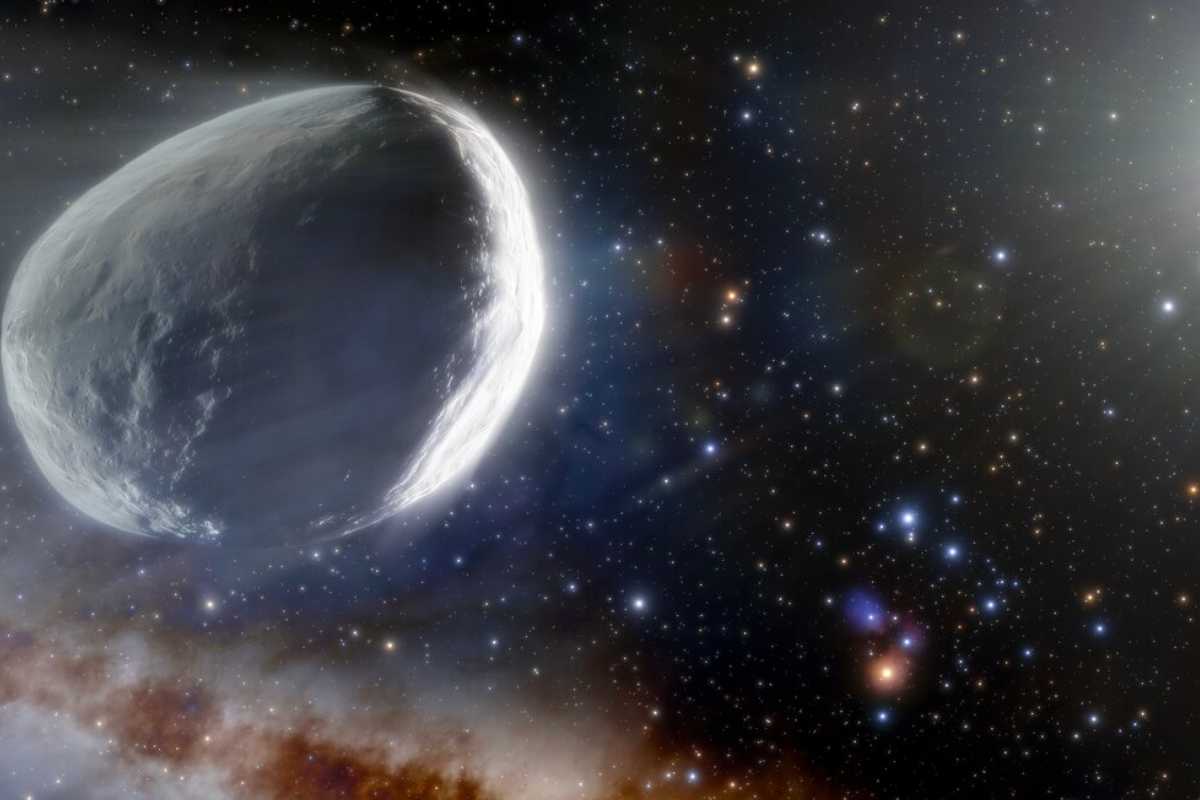
And that with an instrument that wasn’t even designed for that!
Over the past six years, researchers have used the Dark Energy Camera (DECam) on the Victor M. Blanco 4-meter Telescope In Chile, I studied 300 million galaxies and hunted for supernovae and other temporary phenomena in the universe. And that with only one goal: to gain more insight into dark energy (the mysterious driving force behind the accelerated expansion of the universe).
Discoveries in our own solar system
But DECam’s observations were not only well suited to unraveling one of the greatest mysteries in cosmology. The images captured by the camera also turned out to enable researchers to hunt for as-yet-unknown objects in our own solar system. For example, an impressive comet was recently discovered thanks to DECam: C/2014 UN271 Bernardinelli-Bernstein. The comet will go down in the books as the largest comet that humans have ever spotted at a radius of about 100 kilometers.
817 discoveries in total..
And the comet is far from the only object discovered thanks to DECam. In this research article Now that DECam has stopped observing after six years, researchers are taking stock. And guess what? The camera has detected 815 Trans-Neptunian objects, 1 Centaur asteroid and 1 Oort cloud comet in six years.
..of which 416 have not been described before
The discovery of many of those objects – such as C/2014 UN271 Bernardinelli-Bernstein – has already been made public before and therefore not really news. But that is not the case for all 817 objects that DECam has discovered in the past six years. In their paper, the researchers present 416 objects recently found on DECam images, the discovery of which has not yet been announced.
The voyage of discovery
The discovery of all those objects was preceded by quite a labour-intensive process. Because in science, one observation is no observation. So for each potential new solar system object, additional imagery had to be sought in which that same object made an appearance. “We have a special, extremely time-consuming process aimed at finding these objects and trying to pinpoint dozens of detections that belong to one and the same object, among a hundred million potential detections,” explained researcher Pedro Bernardinelli (discoverer of the giant comet named after him) already arrived Scientias.nl from. How laborious that process is becomes clear when we approach Bernardinelli again and ask how much time it took him to find those last 416 objects. “I think it took me a year,” he says. Most of the time was spent looking for additional images that could confirm the original detection. “That took about 9 months and required 15 to 20 million computer hours. During those 9 months I used more than 100 computers nonstop.”
Fantastic result
With the 416 new objects, the total number of objects discovered by DECam thus comes to 817. A fantastic result, especially when you consider that DECam was not designed to identify new objects in the solar system at all. “After processing the images for the first time, we cautiously hoped that we would discover a total of about 500 objects in the solar system. That would have been very impressive.” But there were more than 800. “The latest results have pleasantly surprised us.”
The limit has been reached
DECam is no longer operational, but could it be that the huge data set it left behind hides even more unknown objects? We asked Bernardinelli. “We think we have reached the limit of what was possible with this data and we are proud of that.”
Interesting specimens
Of the more than 800 objects that have surfaced in the DECam data, the giant comet C/2014 UN271 is by far the most interesting object, according to Bernardinelli. “But there are still some crazy objects,” he says. “For example, we discovered an object that is at a distance of 79 AU (Neptune is at 30 AU), which is the most distant object from the last part of our search. This object also has a perihelion of 54 AU.” The perihelion is the point in orbit at which the object is farthest from the sun. And there are very few objects where that point is 54 times farther from the sun than Earth. “And then there’s another interesting object with an inclination of 62 degrees.” This means that the orbital plane of this object makes an angle of 62 degrees with the orbital plane in which the major planets orbit. “With that, the object has a much greater inclination than most other objects.”
They may not all be equally interesting; valuable are the more than 800 objects that DECam has helped to discover, each and every one. “The objects beyond Neptune originated in the early years of the solar system and can tell us how the solar system—particularly the gas giants—formed.” Bernardinelli notes that the objects can be classified into different populations, each with its own history of origin. “And we need to understand that before we can reconstruct the formation of the solar system.”
The more objects from the different populations are discovered, the better it is. The curtain has fallen for DECam, but there are some interesting new observation projects in the pipeline. “The most important project is the Legacy Survey of Space and Time of the Vera Rubin Observatory that will start in 2023,” Bernardinelli says. “This project is expected to expand the population of Transneptunian Objects known to us by a factor of ten.”
Source material:
“A search of the full six years of the Dark Energy Survey for outer Solar System objects” – Arxiv
Interview with Pedro Bernardinelli
Image at the top of this article: NOIRLab / NSF / AURA / J. da Silva (space engine)